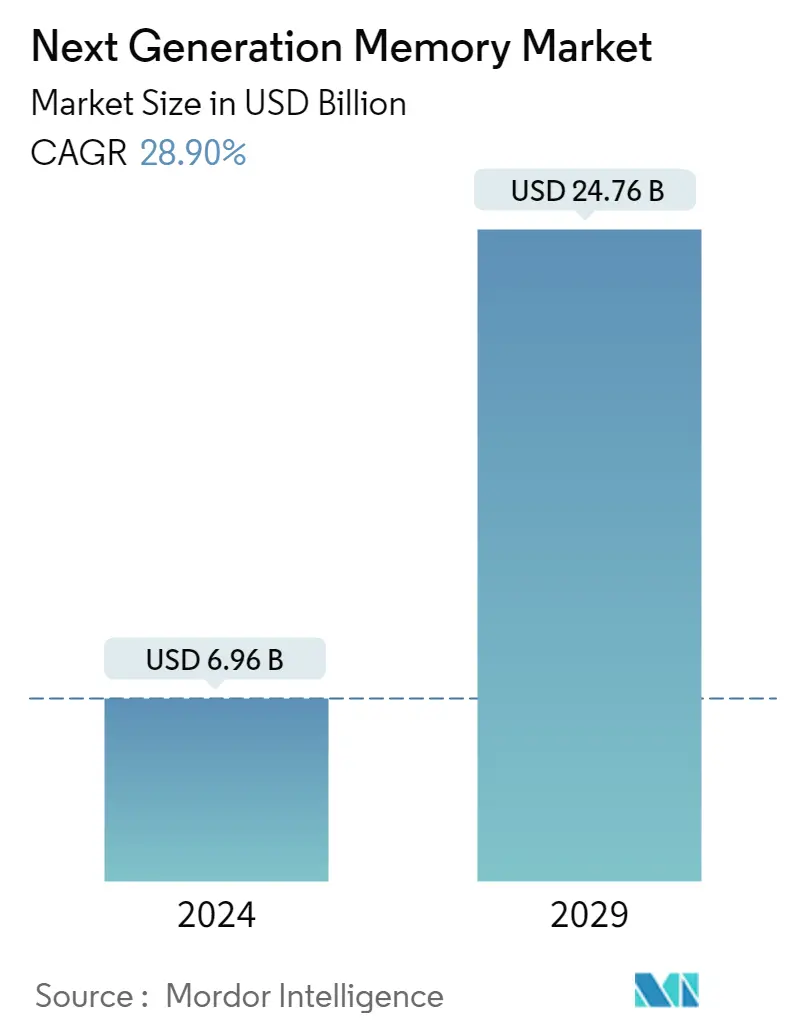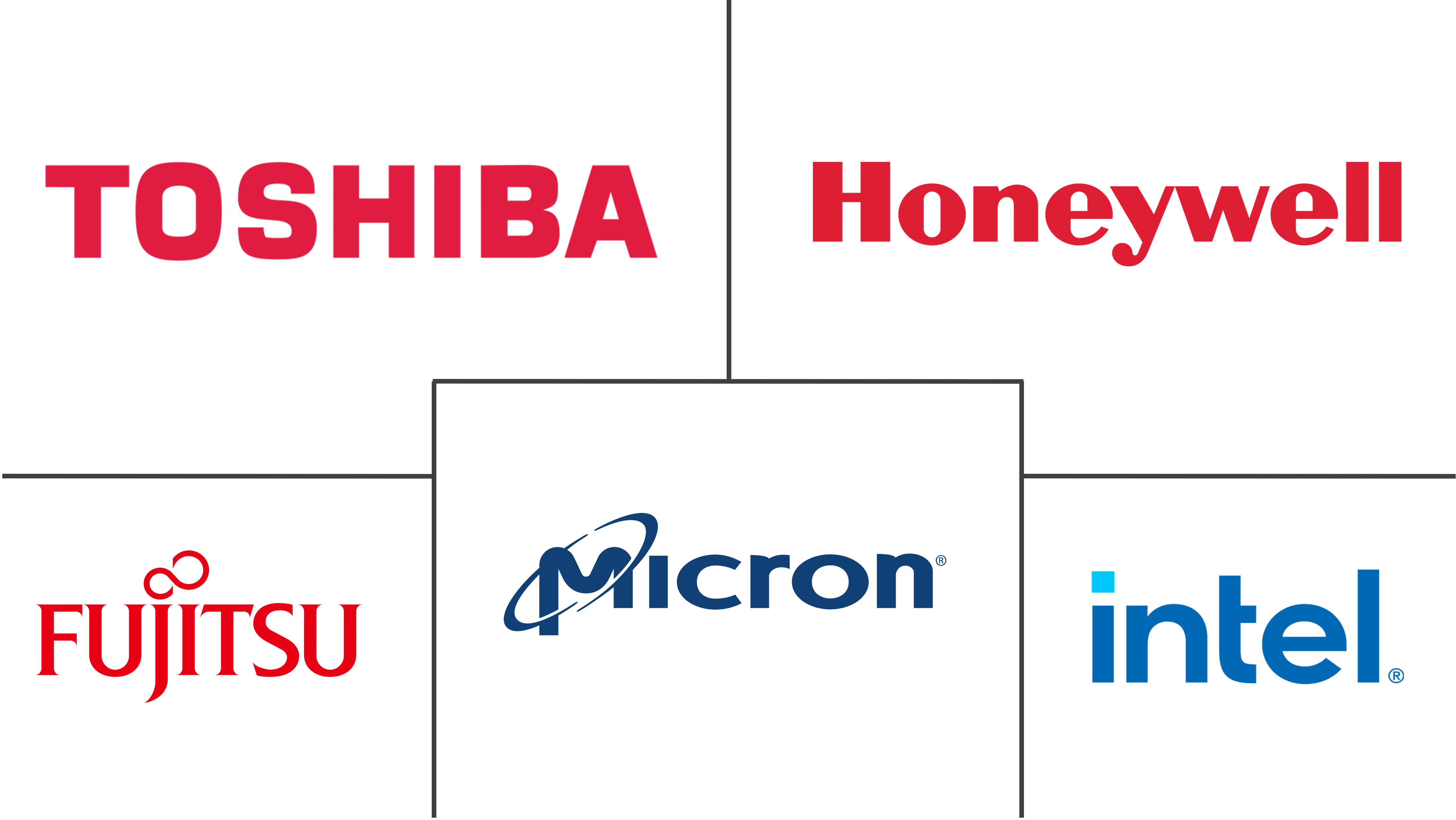Market Size of Next Generation Memory Industry

| Study Period | 2019 - 2029 |
| Market Size (2024) | USD 6.96 Billion |
| Market Size (2029) | USD 24.76 Billion |
| CAGR (2024 - 2029) | 28.90 % |
| Fastest Growing Market | Asia-Pacific |
| Largest Market | North America |
Major Players
*Disclaimer: Major Players sorted in no particular order |
Need a report that reflects how COVID-19 has impacted this market and its growth?
Next Generation Memory Market Analysis
The Next Generation Memory Market size is estimated at USD 6.96 billion in 2024, and is expected to reach USD 24.76 billion by 2029, growing at a CAGR of 28.90% during the forecast period (2024-2029).
- Emerging technologies like artificial intelligence (AI), machine learning (ML), the Internet of Things (IoT), big data, etc., have a growing need for memory devices with high bandwidth, high scalability, and low power consumption. This, along with the growing need for enterprise storage, is one of the most important things driving the growth of the studied market.
- The rapid growth of data has increased the need for better memory and storage in the workplace. Older memory systems have been unable to keep up with the growing amount of data, the need for more bandwidth, and the speed of newer systems.
- With the demand for universal memory devices increasing, most of the new memory technologies aim to become universal memory devices to replace one of the members of the hierarchy with better technology. The high-end laptops use solid-state flash chips instead of huge mechanical hard disks and use the cloud for backup rather than tape drives. Recently, Intel announced Optane, which uses 3D XPoint technology and is close to universal memory. This is primarily a flash drive with non-volatile memory fast enough to function as RAM.
- The emerging non-volatile memory technologies, such as MRAM, STT-RAM, FRAM, phase-change memory (PCM), and ReRAM, combine the speed of SRAM, the density of DRAM, and the non-volatility of flash memory. Hence, these are possible additions to future memory technologies. Furthermore, implementing next-generation infotainment systems and ADAS would combine DRAM memory technologies with significantly higher performance and low power consumption capabilities.
- Furthermore, the increasing demand for enterprise storage applications is driving the market. The end-user industries, such as BFSI, invest heavily in IoT technologies and reap significant financial rewards. For instance, embedded MRAM is a promising technology for applications such as IoT. Also, other next-generation memories, such as 3D Xpoint, offer multiple times faster transfer speeds than the current SSDs.
- Considering the growing demand, vendors operating in the market continuously focus on launching new products to target emerging application areas. For instance, recently, Samsung Electronics announced the launch of their next generation of memory chips that promise to double the speed and offer the most extensive capacity yet. The company introduced these next-generation chips to target the growing demand across data centers and artificial intelligence applications.
- However, the lack of stability under extreme environmental conditions is restricting the market. Despite recent technological advancements, these memory devices are significantly impacted by harsh environmental conditions in terms of durability and reliability. For instance, the more thermal stress a memory device is exposed to, the greater the risk of damaging it, which challenges a market to grow.
- The global outbreak of COVID-19 had a notable impact on the growth of the studied market. However, in post pandemic scenario, the supply chain disruption improved, growth in investment in new IT infrastructures, growth in the adoption of digital technologies which positively impacted demand, such factors are expected to create growth opportunities for the studied market.
